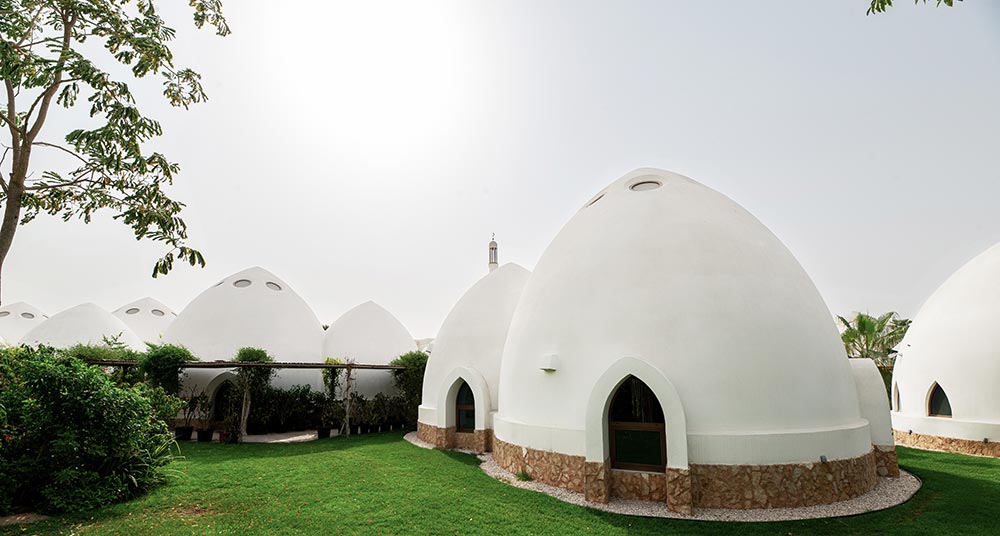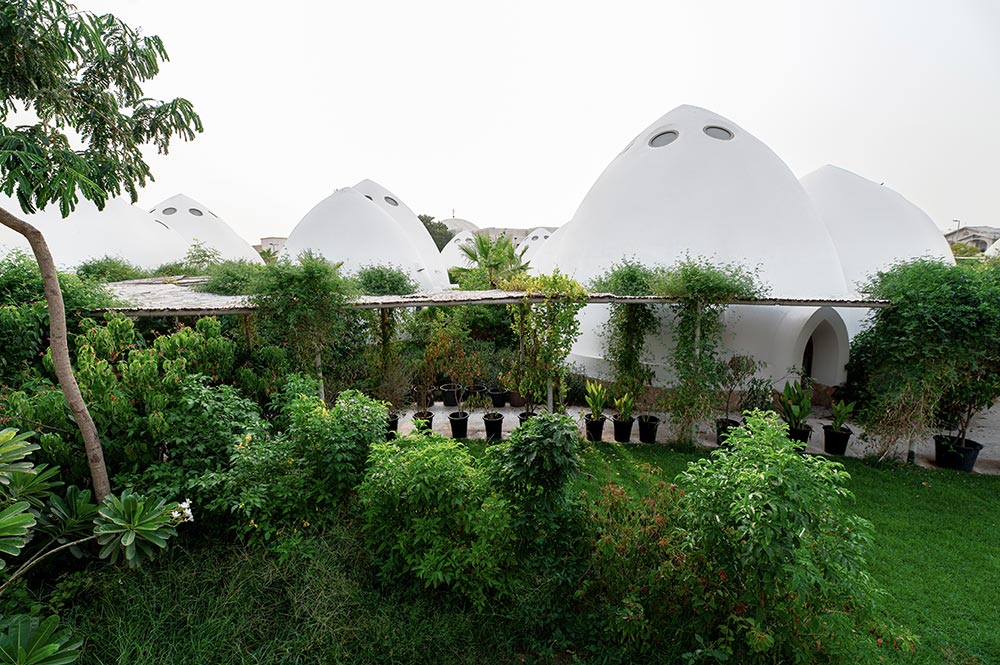Architecture as a Teacher: What Schools Like Al Fanar Teach Us About Space and Growth
Education extends beyond textbooks, lessons, and schedules. It is shaped by the spaces in which students spend their days. Al Fanar School in Dubai, located in Nad Al Sheba, embodies this belief.
It reflects resilience, adaptability, and the rich diversity of Dubai’s multicultural landscape. Designed by EMKAAN, this remarkable educational facility takes inspiration from the koi fish, a symbol of perseverance and growth in Japanese culture, as well as the warmth and protection of a mother’s womb. From above, the master plan forms a gentle spiral, mirroring both the koi’s fluid movement and the nurturing embrace that represents the start of life.
The Story Behind Al Fanar School
The initial plan was ambitious yet profoundly beautiful: to build the school using the Cal-Earth technique a sustainable method utilizing sandbags to empower students to take part in building their own school. This approach aimed to weave a deep connection between the students and their environment, making learning intertwined with the very walls that sheltered them.
However, the vision faced a challenge when fire-resistance regulations prevented the use of this technique, requiring a shift to concrete.
For many, this would have been a setback; for EMKAAN, it became an opportunity. The transition to concrete was not merely a compromise but a reimagining of possibilities. It enabled the lead architect to design the iconic dome openings at the top, inviting natural light to move through the spaces and connect students to the rhythm of the sun and the universe beyond — transforming a challenge into a canvas of light and shadow.

Design Philosophy: Organic Shapes and Boundless Learning

The philosophy behind Al Fanar School emphasizes fluidity, openness, and diversity. Instead of sharp edges and rigid lines, the design embraces curves and spherical forms. These organic shapes symbolize unlimited possibilities, reflecting a learning environment without boundaries.
Spheres and curves appear throughout the campus, creating soft, inviting spaces. These forms guide movement naturally, foster interaction, and reinforce the concept that learning is continuous and expansive. The architecture itself becomes a tool for teaching, inspiring students to imagine, explore, and grow.
The school also draws on diverse architectural traditions. Islamic-inspired shapes provide cultural familiarity, while Feng Shui principles align spaces with natural energy flows to promote harmony and well-being. This integration of heritage and philosophy reflects the school’s multicultural community and creates an environment that is both inclusive and inspiring.
“I wanted the children to feel this movement of the sun to connect them to nature and the universe,” said the Principal Architect, Muhammad Obaid.
He further added, “The obstacles we faced became opportunities to create something exceptional, reflecting the very lessons we hope to teach—resilience, adaptability, and the courage to pursue one’s vision.”
Using Light as a Learning Tool

Natural light plays a central role in the design. Windows are strategically placed at the top of the dome to follow the movement of the sun throughout the day. Light patterns shift across interior walls, creating a visual narrative that allows students to observe the passage of time and the rhythms of nature.
This approach transforms the building itself into a learning tool. Students experience the interplay of light and shadow daily, developing awareness of the natural environment while deepening curiosity about the wider universe. The white dome crowning the building enhances brightness, creating an open and airy atmosphere that contributes to positive mental well-being.
Spaces that Encourage Interaction
Every space in Al Fanar School is intentional. Courtyards host collaborative activities, shaded gardens provide quiet areas for reflection, and pathways guide students across the campus to encourage discovery. Classrooms open into shared areas, and hallways display student projects, turning movement through the school into an interactive learning experience.
This design fosters social skills, empathy, and self-expression. Students learn to collaborate, take responsibility for shared spaces, and appreciate the contributions of their peers. In this way, the school’s architecture extends learning beyond the classroom.

A Design with Purpose
The overarching goal of the project was to create architecture that goes beyond aesthetics. Every decision, from shape to material, was made with intention. Curved forms, open spaces, and natural elements remove physical and intellectual limitations. The school is a place where students can explore ideas freely, guided by an environment that nurtures curiosity, creativity, and well-being.
The final design stands as a unique educational space in the UAE. By challenging conventional architecture, EMKAAN created a campus that inspires students and sets a new standard for what a school can be. Al Fanar School is a place where design itself teaches, supporting every aspect of a child’s life.
When Architecture Becomes a Teacher
Al Fanar School demonstrates that architecture can shape minds as effectively as a curriculum. Open, adaptable classrooms support exploration, and outdoor areas connect students with nature, encouraging focus and comfort. Every element, from the architecture to the interior designers’ work on functionality and comfort, contributes to intellectual, emotional, and social development.
By aligning architecture with educational goals, EMKAAN created a school that nurtures curiosity, responsibility, and imagination. Students at Al Fanar School experience learning as a continuous journey, guided by the spaces they inhabit. This approach reflects a commitment to education that goes beyond the classroom and leaves a lasting impact on every student.
Architecture that Inspires Everyday
The architectural language of Al Fanar is a story of adaptability. The apse shapes echo forms seen from ancient pharaonic architecture to modern interpretations, blending history with forward-thinking design. Every detail, from the sunlight tracing its path through the domes to the way spaces interconnect, tells a story of persistence a path chosen with intention and care.
Al Fanar School is more than an architectural achievement; it is a living lesson for its students a space that not only shelters learning but inspires it through every curve, light, and shadow. In every way, the school embodies the journey it took to build it one of vision, diversity, and the relentless pursuit of a dream.


